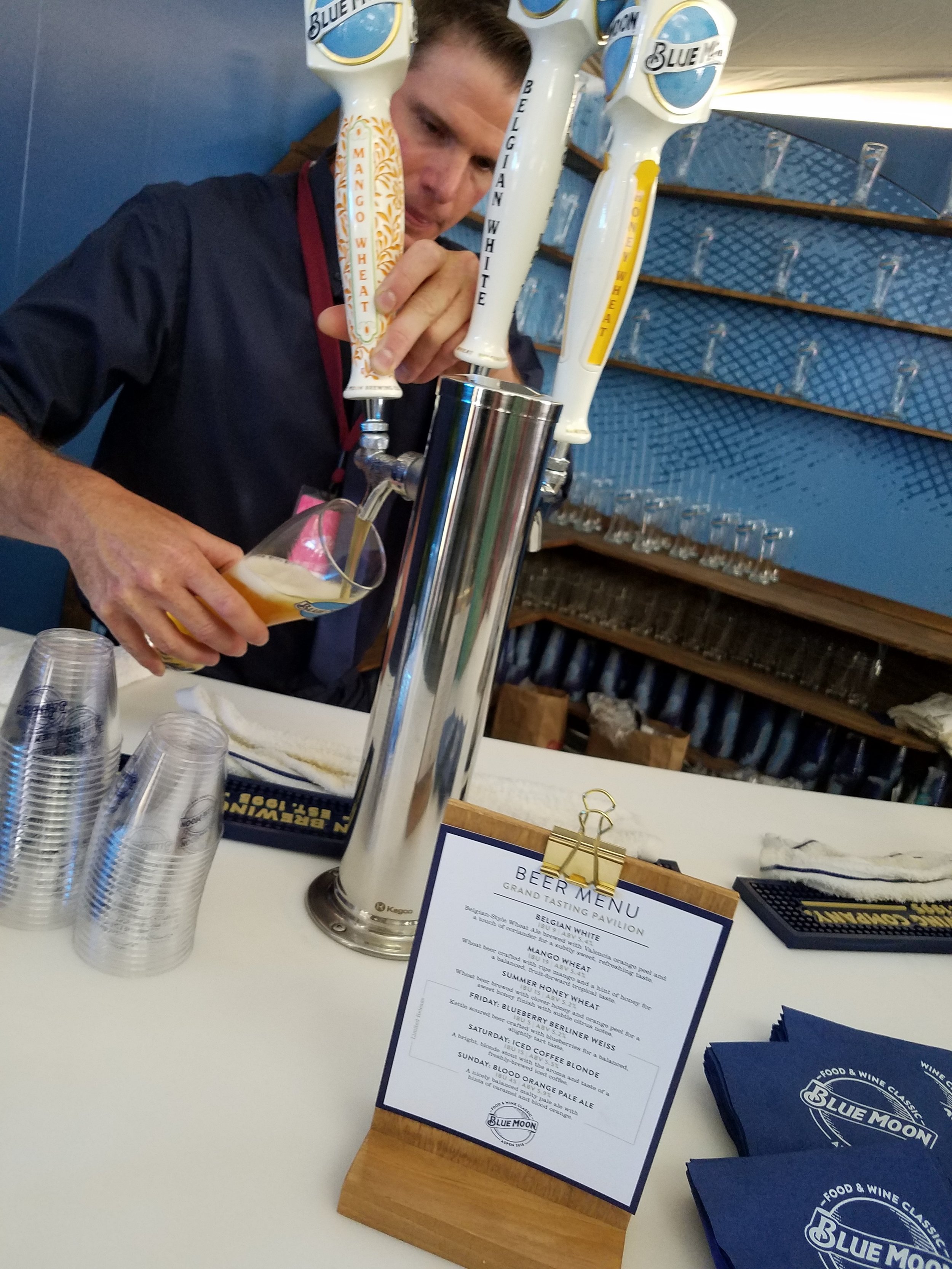Field Trips: Blue Moon Brewery
From the Sandlot to making wine-beer hybrids, barrel aging and iced coffee brew in the River North District, Blue Moon’s journey is to go… smaller?
All photos by Nora McGunnigle.
Denver has 80 breweries (just within city limits—there’s many more in the metro area) that locals and visitors can explore, making it the second largest concentration of breweries in the U.S. These breweries can be as small as Alternation Brewing, with a 2017 production of 15 barrels, or as large as Great Divide Brewing, which brewed nearly 40,000 barrels of beer last year.
Blue Moon certainly wouldn’t be classified as a small brewery—it’s part of one of the largest beer companies in the world, Miller-Coors. But it started small twenty years ago as an onsite brewery at Coors Stadium, and is now making its way into the competitive local market of brewpubs and taprooms, with its own Denver brewery which opened in 2016.
When I walked into the Blue Moon brewpub/brewery in the ever-growing RiNo (River North) District, I didn’t know what to expect. Blue Moon had flown me and several other beer and food writers to Denver and Aspen (where Blue Moon was a major sponsor of the Food & Wine Classic) to see what the company was up to. I didn’t have high expectations, for sure—I was thinking this was just another glitzy marketing gambit by a multibillion dollar conglomerate.
I have to say, I came away impressed. Sure, they’re pumping out barrels and barrels of their top seller, Belgian White (not at the brewpub brewery, but it’s the most popular offering), but they also have barrel-aged offerings, wine-beer hybrids, and spontaneously fermented beers made in their copper coolship.
Brewmaster John Legnard has been with Blue Moon since 1995, when he answered an ad in the newspaper looking for a brewer. As that brewer, he worked in a small 10-bbl brewery in the bowels of the Coors baseball stadium in Denver called the SandLot. That’s where he and founder Keith Villa developed recipes brewed on a small scale and sold only inside the stadium. One particular beer, Bellyside Belgian White, became a huge hit and the Sandlot’s parent company, Coors, took note and began producing it on a much larger scale. The Belgian-style wit (served with a trademark slice of Valencia orange) still enjoys enormous popularity today.
Personally, Belgian-style wits are one of my least favorite styles of beers, regardless of who makes it, but even I could figure out why it’s been so popular for more than twenty years. It’s flavorful but not too Belgian-yeasty-intense, thirst quenching but even better for sipping. Not my kind of beer, but I see the appeal.
I was much more intrigued by the wine-beer hybrids, because that’s definitely not the kind of thing you see very often. Chardonnay All Day and Champagne Moon are two developed by Keith Villa that are in frequent rotation at the brewpub—they were both on during my visit, so I got the chance to try them. I’m glad I did—they were unique, refreshing, and tasty.
Some other kinda out-there beers were the Cranberry-Lavender Blonde Ale, the Cognac-Blackberry Barleywine, Cherry Belgian Dark, and the Rum Barrel Aged Maple Pumpkin. Blue Moon has the resources to do barrel aging right, evidenced by the Scotch Trippel and their Russian Imperial Stout. The sour and blending program seem to be going well, judging by the ratings on Untappd of Foudre Baere and Second Anniversary Blend.
According to brewmaster John Legnard, the brewing team’s been playing around with sour beers since they opened the RiNo brewery, under the leadership of brewer Ben Knutson.
“We’re always experimenting with new, unique ingredients and flavors, and this includes wine-beer blends, and sours,” Legnard says via email. “For example, we just brewed a new sour batch with 600 pounds of Colorado Cherries and another double batch of Peach Sour Golden Ale, which should be ready in a few months.”
Regarding the brewery’s coolship—a still relatively infrequently used open air fermentation vessel—Legnard says that it’s “one of those things that frankly, just happened. We didn’t know we wanted it until we had a chance to trial brew with it for a special beer in 2017. Since then, we’ve used it for several experimental brews for spontaneous fermentations, to wort holding for late-hopping beers.”
My favorite was Blue Moon’s Iced Coffee Blonde Ale, honestly, stellar. I mean—and I’m a little nervous admitting it as a professional beer geek—the Iced Coffee Blonde is probably in my top 25 of all beers I’ve ever tried. Although Blue Moon paid for that beer, this is my honest opinion. It’s made with coffee from a neighboring Denver RiNo coffee roaster, and, as the name suggests, is a light colored and bodied beer with refreshing coffee flavor and aroma. It’s well made, balanced, and just damn delicious
In addition to the surprisingly innovative and tasty beers found at the Brewpub, the food there is amazing. The kitchen is led by veteran chef Darrell Jensen, and he takes pride in making everything in house—down to every sauce and condiment, even ketchup. He admits his favorite dish on the menu to eat and serve is the hamburger. “It always makes me smile when people say it’s the best burger they’ve ever had. We have other great things on the menu that I love, but when you make something everyone knows well and you get a smile, that is the best feeling ever.”
Although there are a lot of breweries in the city, more than anyone can visit in a typical weekend (note: this is not a challenge), it’s worth checking out Blue Moon, especially for lunch or dinner, to experience the range of beers in the enormous, gorgeous tap room. I know I wouldn’t mind going back on my own dime to try Chef Jensen’s burger, and to wash it down with a Brut IPA or Lemondrop-hopped pilsner.
And, of course, the Iced Coffee Blonde ale for dessert.



